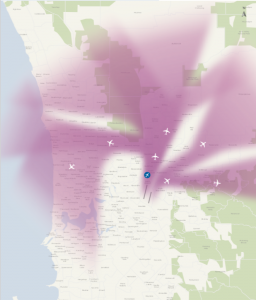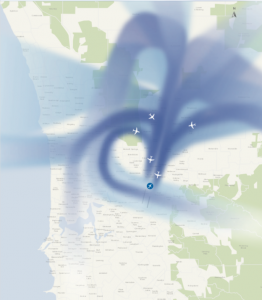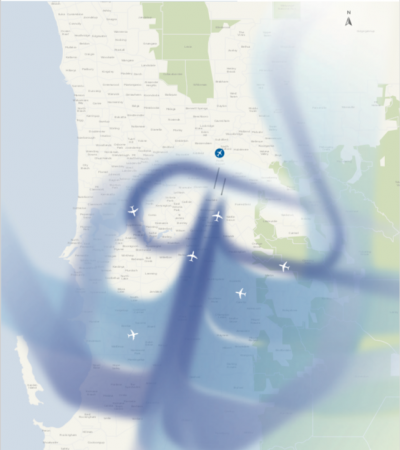The New Runway Project Major Development Plan has recently been released, this document not only provides information on aircraft noise (similar to what you will find on this website) but details how the new runway will be constructed and operated.
Detailed information on how the new runway will operate can now be found at newrunway.com.au.
The need for an additional runway at Perth Airport was first recommended more than 40 years ago by a joint Commonwealth and State Government Committee investigating Perth’s planning requirements.
The new runway is expected to be operational between 2023 and 2028, subject to actual demand and a commercial agreement with airlines being reached. The new runway will be 3,000 metres long and located parallel to the existing main runway.
Perth Airport is located in some of the most complex airspace in Australia. Extensive consultation has resulted in a draft Airspace Management Plan that supports safe and efficient operations of a new runway.
What is the draft Airspace Management Plan?
The draft Airspace Management Plan for safe and efficient operations of a parallel runway system at Perth Airport has been developed. It is not the final design, as this will occur three years out from day of opening of the new runway, however it is a chance for the community to better understand how a parallel runway system may operate and to provide input.
The draft Airspace Management Plan considered:
- safe aircraft operations,
- demand and volume of aircraft traffic,
- weather patterns,
- departure and arrival procedures,
- runway modes of operation,
- aircraft sequencing,
- noise abatement procedures,
- local airspace conditions, and
- current flight path designs.
The draft Airspace Management Plan considers flight corridors where aircraft are likely to fly. The flight corridors have been prepared based on international aviation standards.
Click each flight corridor diagram below to view a larger version.
The conceptual diagrams below show where departures are expected to fly once the new runway is operational.
The conceptual diagrams below show where arrivals are expected to fly once the new runway is operational.
How will aircraft operate from the new runway?
The opening of the new runway will allow better management of the growth in air traffic that has already occurred at Perth Airport and future growth; enable more efficient and effective operations; and provide more scope for airlines to schedule flights to better meet customer needs. The new runway will not increase the total aircraft noise load over Perth in the short term.
Operating Mode
To maximise capacity on day of opening and into the future, Perth Airport will generally operate in independent mixed mode, meaning both runways are used for both arrivals and departures, and the separation of aircraft is not dependent on each other.
In some cases, the runways will be used in dependent mixed-mode operations where separation between aircraft on final approach for each runway is required.
Cross Runway
A decision on the future of the existing cross runway will be made once the new runway is operational and there is a possibility that it will close.
Runway Allocation
Following an extensive review of the airspace and how the new runway could operate, it was determined that, in peak periods, aircraft should generally be allocated to the runways based on a compass departures and terminal arrivals concept.
Compass departures sees the runway allocated according to the direction that the aircraft is going. The main runway (03L/21R) will generally cater for aircraft operating to destinations south, west and north-west. The new runway (03R/21L) will generally cater for aircraft operating to destinations north-east and east.
Terminal arrivals sees aircraft arriving on the runway proximate to the terminal that they operate from.
Aircraft Noise Exposure
For most people, when the new runway opens, their exposure to aircraft noise will reduce because the number of aircraft movements will be spread across two parallel runways. For others, there will be little or no change. Some people will experience an increase in noise and some will be exposed to aircraft noise for the first time.
Further information regarding the new runway draft Airspace Management Plan can be found in our fact sheet or at newrunway.com.au.
Previous Next





